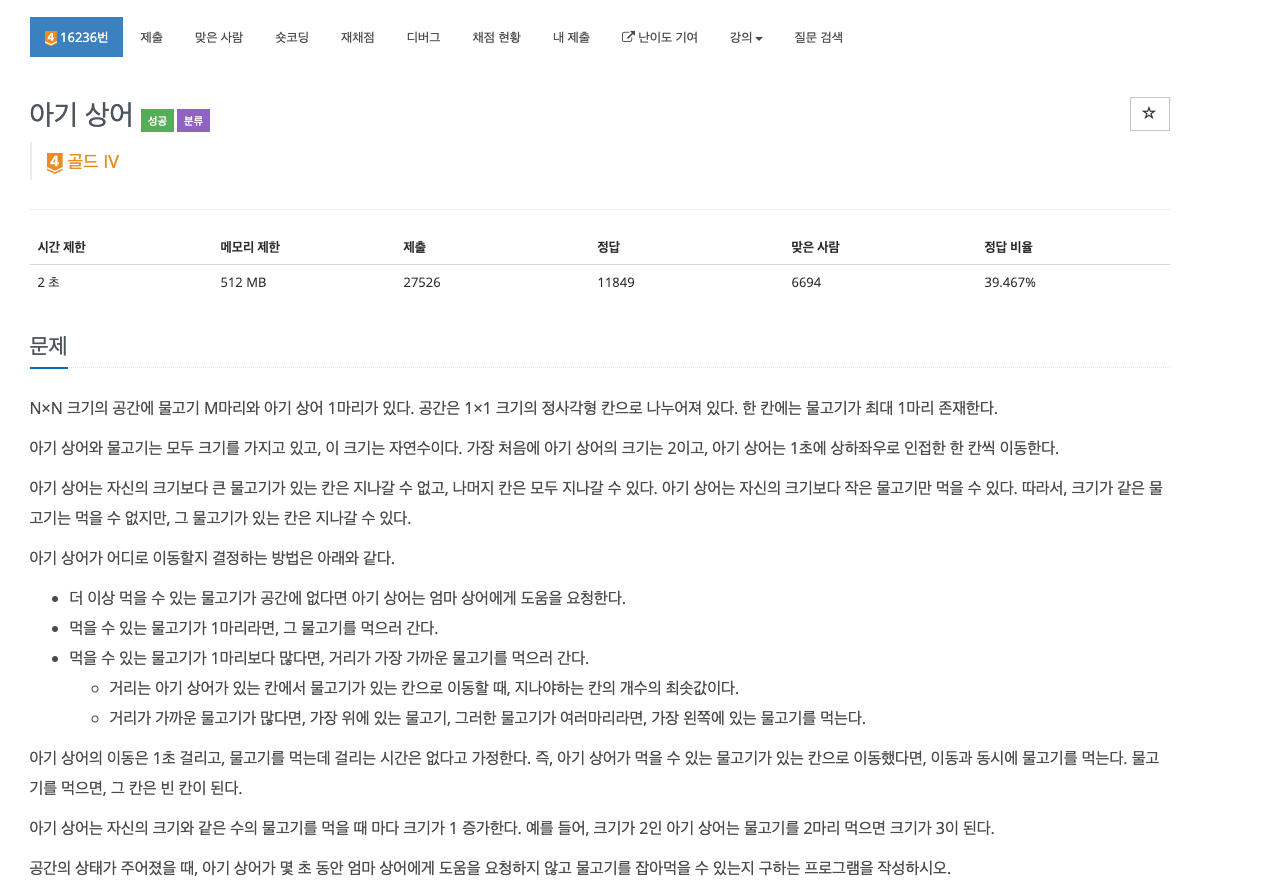#include <cstdio>
#include <vector>
#include <queue>
#include <iostream>
#include <cmath>
#include <algorithm>
#include <set>
#include <deque>
#include <numeric>
#include <map>
#define ll long long
using namespace std;
int N,ans;
int board[25][25];
int cost[25][25];
int dx[4] = {0, -1, 1, 0};
int dy[4] = {-1, 0, 0, 1};
pair<int,int> shark;
int sharkSize = 2;
int eatFishCnt = 0;
int main() {
ios::sync_with_stdio(0);
cin.tie(0);
cout.tie(0);
cin >> N;
for(int i=0;i<N;i++)
for(int j=0;j<N;j++)
{
cin >> board[i][j];
if(board[i][j] == 9)
shark = {i,j};
}
while(true)
{
queue<pair<int,int>> q;
for(int i=0;i<N;i++)
fill(cost[i], cost[i]+N, -1);
q.push(shark);
cost[shark.first][shark.second] = 0;
pair<int,int> nextDest = {1e9, 1e9};
while(!q.empty())
{
auto cur = q.front(); q.pop();
for(int dir=0;dir<4;dir++)
{
int ny = cur.first + dy[dir];
int nx = cur.second + dx[dir];
if(nx<0 or ny<0 or nx>=N or ny>=N) continue;
if(cost[ny][nx] >= 0 or board[ny][nx] > sharkSize) continue;
cost[ny][nx] = cost[cur.first][cur.second] + 1;
if(board[ny][nx] == 0 or board[ny][nx] == sharkSize){
q.push({ny,nx});
continue;
}else if(board[ny][nx] >=1 and board[ny][nx] <=6){
int distCur=1e9;
if(nextDest.first != 1e9)
distCur = cost[nextDest.first][nextDest.second];
int distNext = cost[ny][nx];
if(distNext > distCur) continue;
else if(distNext < distCur) nextDest = {ny, nx};
else if(distNext == distCur){
if(ny < nextDest.first)
nextDest = {ny,nx};
else if(ny == nextDest.first){
if(nx < nextDest.second)
nextDest = {ny,nx};
}
}
}
}
}
if(nextDest.first == 1e9) goto end;
eatFishCnt++;
if(eatFishCnt == sharkSize) {
sharkSize++;
eatFishCnt = 0;
}
board[shark.first][shark.second] = 0;
board[nextDest.first][nextDest.second] = 9;
ans += cost[nextDest.first][nextDest.second];
shark = nextDest;
}
end:;
cout << ans;
return 0;
}
- 로직
shark의 좌표를 시작으로 BFS를 수행해서 가장 가까운 좌표를 찾는다ans를 증가시키고 shark를 update!
- 느낀 것
: 문제의 조건을 정확하게 파악하지 못해서 시간이 오래걸렸기 때문에 정신을 차려야 한다

